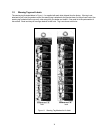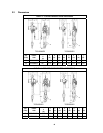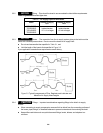
12
3.0 Preoperational Procedures
3.1 Air Supply System Requirements
3.1.1
NOTICE
Pressure and Flow - Verify that the air supply system has capacity to supply your
air hoist with required pressure and flow. Otherwise the hoist may operate poorly or may fail to
operate. See Section 3.2.
3.1.2
CAUTION
Lubrication - The hoist requires lubrication for proper operation. The oil in the air
supply is the primary source of lubrication to the hoist. Therefore, a dedicated air supply lubricator must
be used with the hoist. Refer to Section 3.3.
3.1.3
CAUTION
Air Quality - Good air quality is essential to prevent damage to your hoist and to
ensure its proper operation. The air must be clean and free of debris such as dirt and rust. Refer to
Section 3.4 for filtration requirements. The air must also be dry; free of moisture and water. Refer to
Section 3.5.
3.2 Air Supply Capacity And Regulation
3.2.1 Capacity - The air supply system must be capable of delivering the required airflow (cfm) to the hoist
inlet port. Without the required airflow the hoist will not operate properly or may not operate at all. See
Section 2.0 for your hoists air consumption requirements. In determining if your system is capable of
supplying the required airflow, consider the following:
Capacity of compressor(s) and tank
Other air consuming equipment
Flow restrictions such as pipes, hoses, valves and fittings
Inadequate capacity will cause a significant drop in pressure when the hoist is operated, and could
cause poor performance or failure to operate.
3.2.2 Regulation - The hoist requires a constant supply of air at a pressure of between 60 and 90 psi. If the
air supply is not regulated or is regulated at a pressure greater than 90 psi, then a regulator must be
used. The regulator may be located anywhere upline of the lubricator in the air supply to the hoist.
3.3 Lubrication
3.3.1
CAUTION
The hoist must be supplied with its own lubricator. The lubricator must be located
as follows:
1) Best location - At the hoist inlet. In this case the lubricator can be either the mist type or drop
type.
2) Second best location - No more than 15 feet away from the hoist, at the same elevation or
above the hoist inlet. In this case the mist type lubricator must be used.
3) Third best location - No more than 15 feet away below the hoist. In this case the mist type
lubricator must be used.
3.3.2
CAUTION
The lubricator must be set to deliver the equivalent of 10 to 15 drops of oil per
minute (2 to 3 cc/minute). The hoist’s exhaust will emit a fine oil mist when properly lubricated.
3.4 Filtration
3.4.1
CAUTION
The air entering the hoist inlet must not contain any particulate greater than 5
microns in size. Therefore, the hoist must have a 5 micron filter
in its air supply. The filter must be
upstream of the lubricator.


















